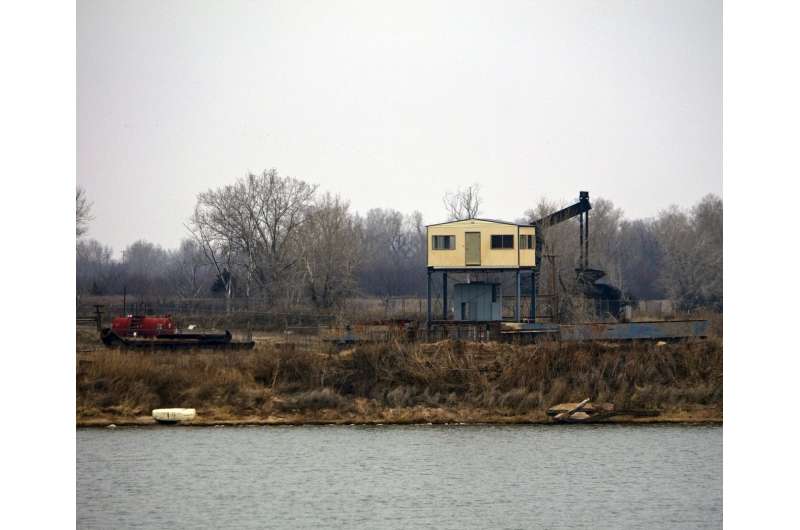Diesel vehicles in oil sands operations contribute to regional pollution

Wildfires, cigarette smoking and vehicles all emit a potentially harmful compound called isocyanic acid. The substance has been linked to several health conditions, including heart disease and cataracts. Scientists investigating sources of the compound have now identified off-road diesel vehicles in oil sands production in Alberta, Canada, as a major contributor to regional levels of the pollutant. Their report appears in ACS' journal Environmental Science & Technology.
Recent studies on isocyanic acid pollution in the air measure the compound as a direct emission from biomass burning and on-road gasoline and diesel vehicles. But laboratory experiments simulating atmospheric conditions have shown that the substance can also be formed from off-road diesel exhaust through chemical reactions that occur as it mixes with the air during the day. Based on these findings, analyses suggest that these secondary isocyanic acid emissions could be up to four fold larger than the direct emissions from diesel vehicles. This is particularly important in areas downwind of heavy off-road diesel use. John Liggio and colleagues wanted to see how closely the laboratory-based estimates of secondary isocyanic acid might mirror real-world conditions.
The researchers sampled the air above the Athabasca Oil Sands region of Alberta that is home to what is estimated to be the third largest oil reserve in the world. Off-road diesel vehicles transport nearly half of the oil recovered in the oil sands. The team also analyzed the air downwind of the industrial operations. Their results showed that off-road diesel vehicles released about 6 kilograms of isocyanic acid per hour, while the oxidation of the vehicles' exhaust added another 116 to 186 kilograms of the compound per hour.
Further field-based calculations suggest that these secondary emissions could be up to 20 times higher than the primary emissions. Computer modeling estimates that for the city of Fort McMurray, which is near the Athabasca operations, more than half of the isocyanic acid in the air comes from the oil sands. The average concentration of about 25 parts per trillion was well below the threshold level (1,000 parts per trillion) at which the substance is considered harmful. But emission plumes from the oil sands could increase the levels by an order of magnitude to 250 to 600 parts per trillion. The results highlight the need to better understand isocyanic acid sources and how they might impact human health, the researchers say.
More information: "Quantifying the Primary Emissions and Photochemical Formation of Isocyanic Acid Downwind of Oil Sands Operations" Environmental Science & Technology (2017). pubs.acs.org/doi/abs/10.1021/acs.est.7b04346
Journal information: Environmental Science & Technology
Provided by American Chemical Society




















